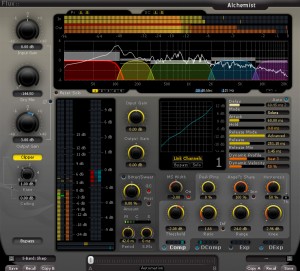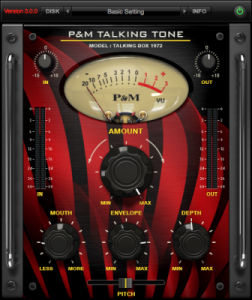Pro Tools Pioneer: 3 Quick Tips for Exquisite Mixing in the Box
It’s kind of funny this foray into journalism I’ve taken.
For instance I’m in the “B” control room at Downtown right now, and my client (Black Thought from The Roots) just saw me hammering away on my laptop and asked, “Zach what the f**k are you writing man”?. This was followed by a confused look, and the inevitable question: “A blog?” Besides a “blog writer”, I’ve also been stamped some sort of Pro Tools authority. Crazy I know.
Coincidentally, Pro Tools 11 and my phony journalism, have taken a similar arc. At first I got a lot of folks reaching out to talk about software compatibility, and advice on hardware. Then guys would reach out regarding new additions to the AAX plugin list, and to debate HD Native or HDX vs TDM.
Then things settled down a bit, and the Pro Tools pioneering sort of became yesterday’s news. The world adopted Pro Tools 11, or certainly began to understand all the nuances associated with upgrading to it.
So the recent news, that Avid had been delisted from the NASDAQ stock exchange brought about a bit of a surprise. Friends and studio rats started calling and texting, me the phony journalist, looking for the hottest news. Write a couple “blogs”, and dudes were acting like I was on the board at Avid!
Panic and the familiar Avid is “going out of business” were hurled at my email inbox, like I was carrying a target in my book-bag. You’d think AVID was a shady furniture shop out in Queens. One of the assistants at Downtown called me to break the news, and you’d get the vibe someone had just cancelled his Christmas. So Bah humbug right. Personally I think somebody should go tell “The Nasdaq” to pick on Cubase instead. Use a m**tha-ucker Naz-dak. So stop messin’ with my DAW.
Alright cursing out a stock exchange might not be my best “blogging”, so here is my 2 cents, but a little more refined. Avid’s stock has indeed trended downward, and they have most certainly made waves for delaying earnings reports. The thing to keep in mind, is that AVID like any corporation is a company with a portfolio of holdings, some performing well and others not.
That company is comprised of shareholders, who formulate their opinions accordingly. I won’t pretend to know what’s going on with Avid’s Video, Broadcast, or Storage divisions, but I do know this: Pro Tools is unequivocally the industry standard for audio production in the Music and Film industry. With a passionate user base that is highly entrenched, Pro Tools as a product is far too valuable to cease to exist.
Even if Avid dissolved entirely (which it won’t), its shareholders would demand (with fervor I should ad), that Pro Tools continue to find a place in the market. Whether the line became autonomous, was sold to some billionaire (maybe Peter Gabriel), or purchased by another gear company, Pro Tools won’t disappear: It’s far too valuable. I don’t know much, but this you can count on.
And Now…The Mix Tips You’ve Been Waiting For
So anyway … enough with the stock tips, and the ish talking, lets get down to some tech!
Multi-band compression …. Ahh if there was ever a rich man’s plugin its gotta’ be those. When your mixing for pop, a good rule of thumb is a clear mix is a functional mix. Clarity can often be achieved by the management of the music’s resonant frequencies. Back in the day producers hired arraigners, whose job was to take a composition and arrange each part specifically for the various instruments, removing harmonic clutter along the way.
Then musicians played those parts with dynamics and feel. Think of Quincy Jones, or Carol Kaye and you’ll understand why those records didn’t need much EQ or compression. They were basically just blended to taste and printed, in most cases very quickly.
In the TDM world, I did a lot of subtractive EQ’ing finding resonant frequencies and ducking them with the Sonnox Oxford EQ. In lead vocals often one note in a song’s melody can sound harsh, and the rest perfectly fine. Good arrangements will take into account a singer’s range, and play to his or her strengths.
But because some of this craft is gone, and because the melody is a moving target, I’d have to find that note and automate my EQ to subtract that frequency when it appears. The rational here is that getting rid of un-wanted resonances is critical, but over subtracting can make your mix sound thin. It can also create very subtle phase issues, that aren’t glaring by themselves but when added up across an entire mix can lose some of the songs magic.
On TDM DSP was harder to come by, and multi-band comps were more DSP intensive. But things are changing: Comparatively my new rig has more DSP, so I’ve been turning to multi-band comps to remove those resonant frequencies.
With a multi-band you can tell the comp what frequency to compress while leaving the other frequencies you like. If that vocal gets nasty at 5k, when the singer moves, say, to the 3 note of the scale, just tell the comp to duck at 5k but nothing else preserving the top end presence. Your vocal will sound clearer, and won’t lose any size.
To achieve this I have been turning to two incredible new plugins from Flux. First I use “epure” to find out where my resonances are by taking a narrow band Q, with a sharp gain and sweeping until I really hear the problem spot.
I disable the EQ, and then take that frequency and input it in to the “alchemist” 5 band multi-comp, and program the compressor to compress just that part of the vocal. These plugins are so smart, the “epure” eq especially. At this point I can’t mix with out them.
Tone Too
OK, so that maybe isn’t the most exciting part of a mix. Since digital recording is so clean, plugins that add tone have become all the rage. King of the tone department could be Cranesong who with “Phoenix” and “Heat”, kind of stole the show. They have a newish gadget that emulates the tone of vinyl called “Peacock”. Its awesome, and just the subtle touch that Izotope “Vinyl” sometimes lacks.
I’ve recently started using Metric Halo’s “Character” a lot. I first got hip to Metric Halo, when Dr. Luke (shameless name drop) came to Downtown, and requested that we have “Channel Strip” on the rigs. “Character” emulates the sonic character of analog gear, in a very usable way. Its not goofy, like adding hum or white noise, it creates color by adding variable amounts of tone. It’s been valuable on sessions where soft synths feel one dimensional, and in general where things could use some toughening up.
Plug & Mix Plug
So that brings me to Plug & Mix, which for me anyway, is a new company making some really cool FX. I have a bundle that they sell that comes with, like, 40 plugins, which are in the spirit of guitar pedals: Phaser, talkbox, leslie simulator, uni-vibe, bit crusher, distortion etc….
During tracking sessions, I’ve been using them a lot. When producers and artists ask for FX, I’ll use these. Often in the same way I would grab a pedal, but they are good enough to get convincing results. Check em’ out, trust me you’ll find them useful.
There is a bunch of things I’m even more excited about, but I have a word limit on these articles and I’ve far exceeded it! Mix bus compression is a big one though, and the new Mac Pro …. Lots to report on that thing.
On a parting note, Pro Tools 11 is starting to pop up more and more. I’m less like the first guy at the party these days, and more one of a growing crowd. Thanks for reading, and please stay tuned!
Zach Hancock is a NY-based engineer and producer. He works as chief engineer at Downtown Music Studios, where he works with a wide range of artists spanning from Charli XCX to Birdy.









